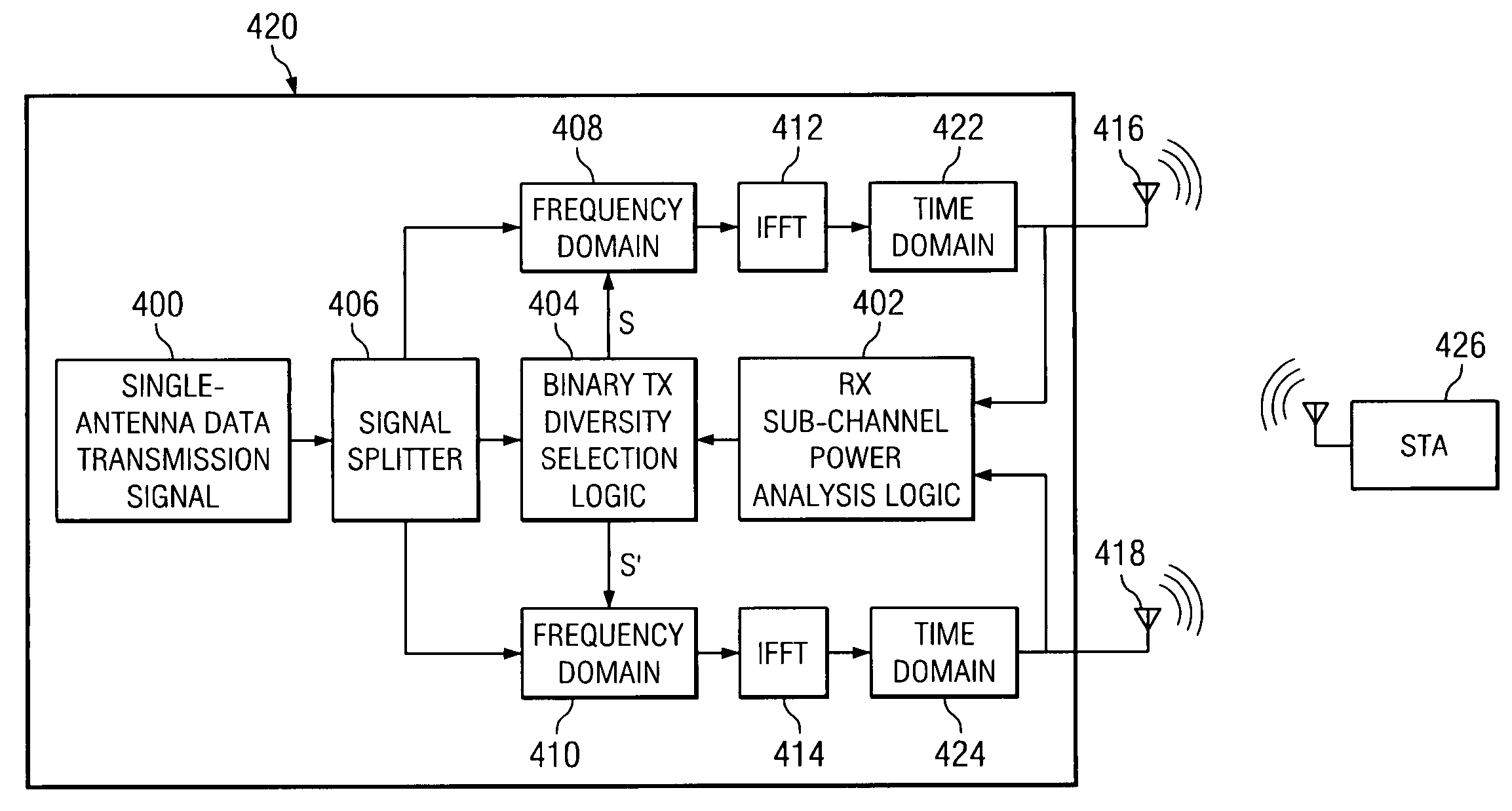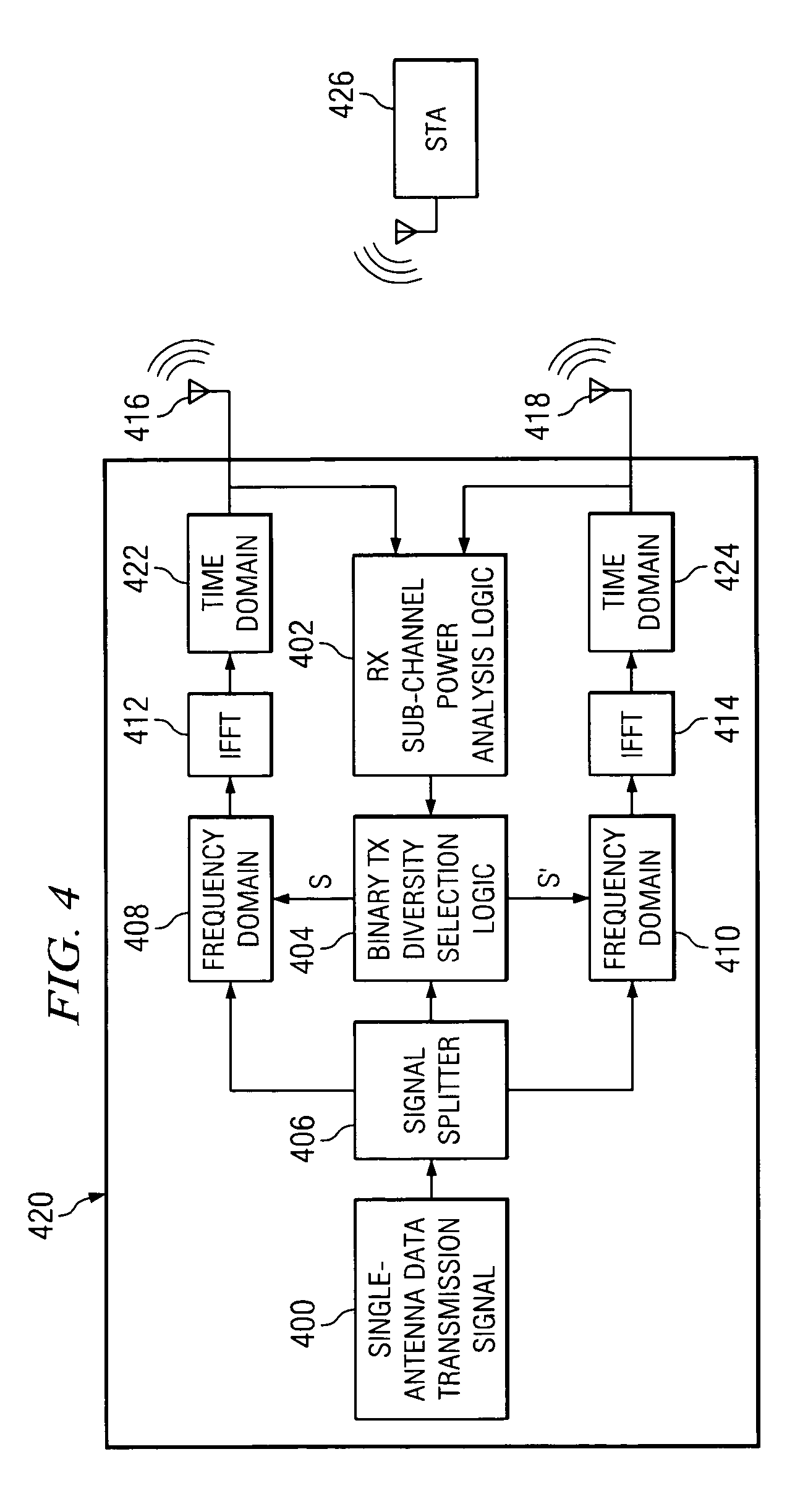Frequency-domain subchannel transmit antenna selection and power pouring for multi-antenna transmission
a multi-antenna transmission and sub-channel technology, applied in the field of wireless local area networks, can solve the problems of affecting the performance of systems solely comprising single-antenna wlan devices, and unable to take advantage of the vast improvement in performance realized by systems solely comprising multiple-antenna wlan devices, and achieve the effect of high communication quality
- Summary
- Abstract
- Description
- Claims
- Application Information
AI Technical Summary
Benefits of technology
Problems solved by technology
Method used
Image
Examples
Embodiment Construction
[0017] The following discussion is directed to various embodiments of the invention. Although one or more of these embodiments may be preferred, the embodiments disclosed should not be interpreted, or otherwise used, as limiting the scope of the disclosure, including the claims. In addition, one skilled in the art will understand that the following description has broad application, and the discussion of any embodiment is meant only to be exemplary of that embodiment, and not intended to intimate that the scope of the disclosure, including the claims, is limited to that embodiment.
[0018] The subject matter disclosed below provides a technique for enabling a multiple-antenna WLAN device to achieve performance improvements when communicating with a single-antenna WLAN device or when communicating with a multiple-antenna WLAN device operating in a single-antenna mode. The embodiments described herein may be provided in the context of an IEEE 802.11 compliant device, but other wireless...
PUM
 Login to View More
Login to View More Abstract
Description
Claims
Application Information
 Login to View More
Login to View More - R&D
- Intellectual Property
- Life Sciences
- Materials
- Tech Scout
- Unparalleled Data Quality
- Higher Quality Content
- 60% Fewer Hallucinations
Browse by: Latest US Patents, China's latest patents, Technical Efficacy Thesaurus, Application Domain, Technology Topic, Popular Technical Reports.
© 2025 PatSnap. All rights reserved.Legal|Privacy policy|Modern Slavery Act Transparency Statement|Sitemap|About US| Contact US: help@patsnap.com



